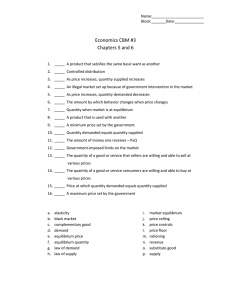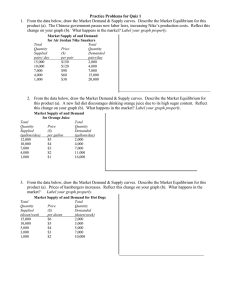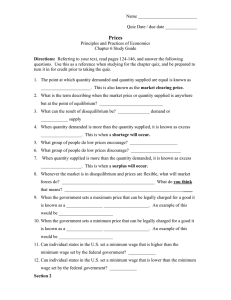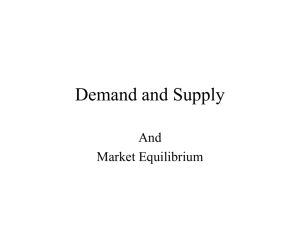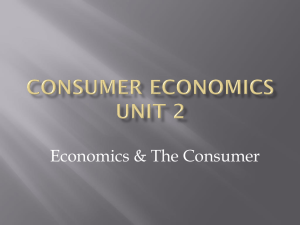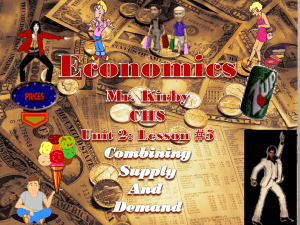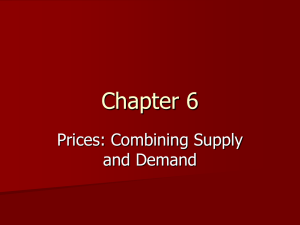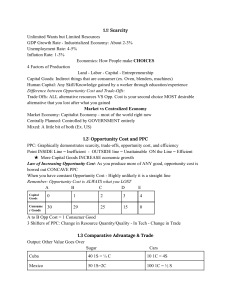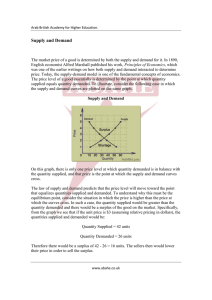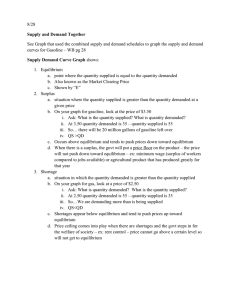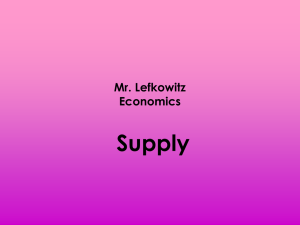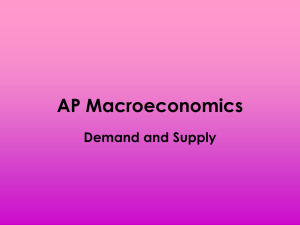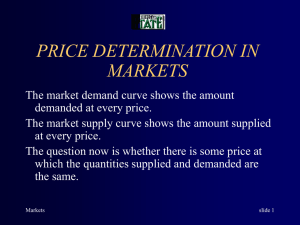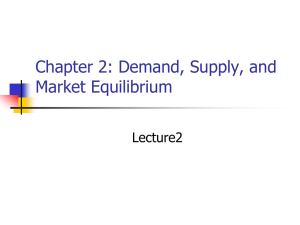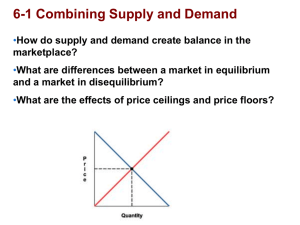File
advertisement
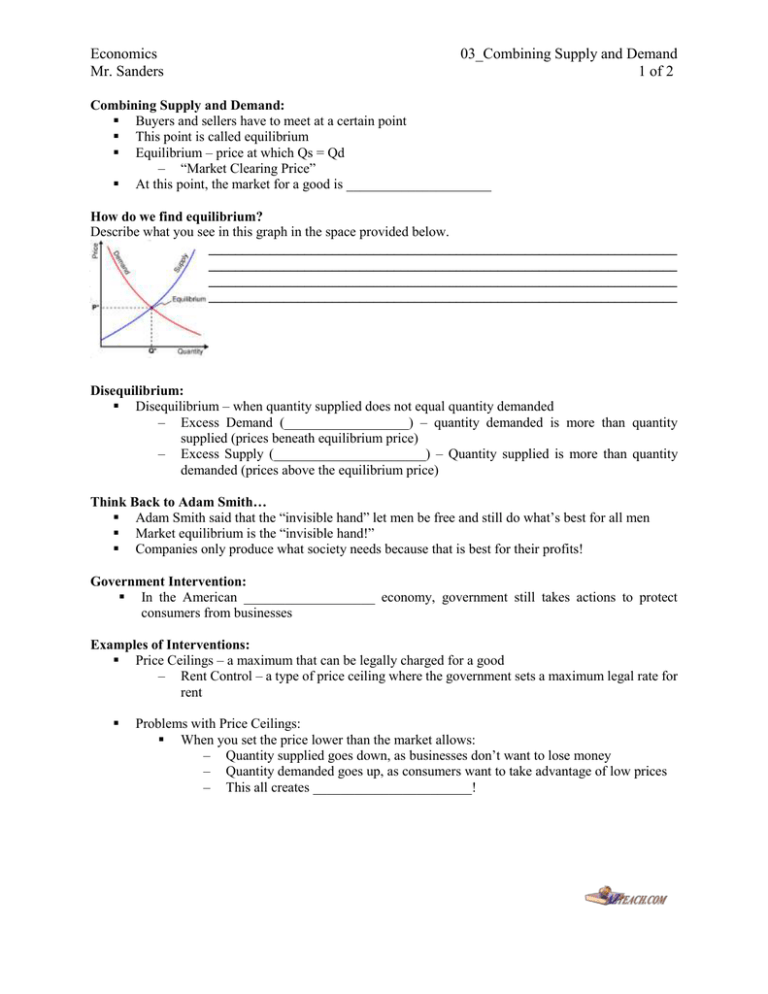
Economics Mr. Sanders 03_Combining Supply and Demand 1 of 2 Combining Supply and Demand: Buyers and sellers have to meet at a certain point This point is called equilibrium Equilibrium – price at which Qs = Qd – “Market Clearing Price” At this point, the market for a good is _____________________ How do we find equilibrium? Describe what you see in this graph in the space provided below. _____________________________________________________________________________________ _____________________________________________________________________________________ _____________________________________________________________________________________ _____________________________________________________________________________________ Disequilibrium: Disequilibrium – when quantity supplied does not equal quantity demanded – Excess Demand (__________________) – quantity demanded is more than quantity supplied (prices beneath equilibrium price) – Excess Supply (______________________) – Quantity supplied is more than quantity demanded (prices above the equilibrium price) Think Back to Adam Smith… Adam Smith said that the “invisible hand” let men be free and still do what’s best for all men Market equilibrium is the “invisible hand!” Companies only produce what society needs because that is best for their profits! Government Intervention: In the American ___________________ economy, government still takes actions to protect consumers from businesses Examples of Interventions: Price Ceilings – a maximum that can be legally charged for a good – Rent Control – a type of price ceiling where the government sets a maximum legal rate for rent Problems with Price Ceilings: When you set the price lower than the market allows: – Quantity supplied goes down, as businesses don’t want to lose money – Quantity demanded goes up, as consumers want to take advantage of low prices – This all creates _______________________! Economics Mr. Sanders 03_Combining Supply and Demand 2 of 2 Price Floors – a minimum price set by the government that must be paid for a good or service – Minimum Wage – a type of price floor where a business must pay a worker at least a certain amount for an hour of labor Problems with Price Floors – If the government sets a price floor above market equilibrium – people __________________ consumption of that product – suppliers tend to overproduce – if the government sets minimum wage too high, for example, you get high unemployment rates! The Role of Prices: The Price System: The U.S. and other free markets operate under the “__________________________________” o The price system uses a monetary figure to display the value of a good, letting consumers choose which goods to spend their money on Advantages: Price is an incentive – it tells consumers and producers how to adjust their patterns Price is a signal – it tells people whether the market for a good is profitable or not The Price System is Flexible – prices change with supply and demand The Price System is Free – the price system does not require large government agencies to oversee the distribution of goods Problems with Other Systems: __________________________ – the government sets limits on how much of a product you are allowed to consume – Rationing causes shortages since the government often does not set reasonable limits __________________________ – the market where goods are sold illegally – Black Markets encourage higher prices, and also defeat the purpose of a command economy Here’s Why it Matters: The Price System allows resources to be allocated (given out) efficiently All resources are placed where they are most valuable to consumers All without the intrusion of the government in your life! Possible Disadvantages: Imperfect Competition – if only a few firms sell a product, there is not enough competition to keep prices _____________. ___________________ Costs – costs that affect people with no control over the production of a good (such as pollution)

